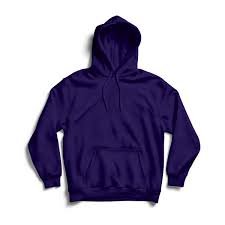Procurement has shifted from a back-office cost center to a strategic driver of resilience, sustainability, and growth. In 2025, procurement leaders are navigating an environment shaped by tariffs, geopolitical volatility, ESG mandates, and rapid advances in technology. The latest supply chain news points to procurement as a crucial function for balancing cost control with long-term resilience.
AI and Automation Reframe Procurement Workflows
Artificial intelligence is becoming a defining force in procurement. Instead of being used only for spend analytics, AI is now embedded across sourcing, risk management, and supplier collaboration.
-
Predictive Insights: AI tools anticipate supplier delays, tariff shifts, and commodity price swings, enabling faster responses.
-
Automation of Routine Tasks: Invoice approvals, spend classification, and contract reviews are increasingly automated, freeing up time for strategy.
-
Generative AI in Sourcing: New copilots help draft RFPs, analyze bids, and simulate award scenarios across multiple suppliers.
Recent supply chain news highlights procurement executives reporting time savings and higher accuracy when deploying AI in sourcing cycles.
Risk Diversification and Resilience Building
Geopolitical turbulence and tariff uncertainty are forcing procurement teams to diversify sourcing strategies.
-
Supplier Diversification: Firms are adding backup suppliers in Southeast Asia, Mexico, and Eastern Europe to avoid overreliance on single regions.
-
Nearshoring: More companies are sourcing closer to demand markets to cut exposure to long global transit routes.
-
Scenario Planning: Procurement teams are running “what-if” simulations on tariffs, sanctions, or port closures to prepare contingency plans.
This reflects a wider shift in supply chain news from efficiency to resilience as the operating model for procurement.
ESG and Scope 3 Emissions Take Center Stage
Sustainability is no longer optional—it is a procurement mandate. Regulations such as the EU Corporate Sustainability Due Diligence Directive (CSDDD) are forcing companies to trace supplier practices, measure emissions, and report transparently.
-
Supplier ESG Scoring: Procurement platforms now include sustainability metrics in supplier evaluations.
-
Digital Product Passports: Item-level traceability is gaining traction to track product origins and recyclability.
-
Collaboration on Compliance: Buyers are working with suppliers to align on carbon reduction and labor standards, not just costs.
Procurement is increasingly at the center of corporate ESG strategies, with responsibility for the majority of Scope 3 emissions.
Spend Visibility and Cost-to-Serve Analytics
Inflation and tariff pressures have placed greater emphasis on cost transparency. Procurement leaders are moving beyond price negotiations to holistic cost-to-serve models.
-
Tail Spend Control: Procurement is tightening oversight on small, unmanaged purchases that often leak value.
-
Total Landed Cost Analysis: Teams are factoring in tariffs, freight, duties, and energy costs when evaluating sourcing options.
-
Control Towers: Some firms are embedding spend visibility into procurement command centers, giving real-time dashboards on costs, risks, and supplier status.
This trend reflects a growing maturity in procurement—treating spend visibility as a strategic enabler rather than a reporting exercise.
Supplier Collaboration and Long-Term Partnerships
Transactional, price-only procurement is giving way to more collaborative models.
-
Joint Forecasting: Buyers and suppliers are sharing demand signals to smooth production planning.
-
Risk-Sharing Contracts: Agreements now include shared responsibility for cost fluctuations or disruptions.
-
Innovation Partnerships: Procurement teams are working with suppliers to co-develop sustainable materials or process innovations.
As highlighted in supply chain news, firms with strong supplier relationships are proving more resilient during shocks.
Technology and Platform Adoption
Procurement technology is evolving at speed. Cloud-based platforms, orchestration tools, and AI copilots are streamlining complex workflows.
-
Intake and Orchestration: New tools unify purchase requests across systems for better visibility.
-
Contract Intelligence: AI-powered analytics flag compliance risks and optimize renewal terms.
-
Supplier Risk Dashboards: Integrated tools track financial, geopolitical, and ESG signals across supplier networks.
These innovations are pushing procurement further into real-time decision-making.
Strategic Takeaways for Procurement Leaders
From the latest supply chain news, several imperatives stand out for procurement executives:
-
Invest in AI and automation where repetitive tasks slow down procurement cycles.
-
Diversify supplier bases to reduce geopolitical and tariff risks.
-
Embed ESG compliance into supplier selection and monitoring processes.
-
Adopt cost-to-serve analytics for true visibility on sourcing trade-offs.
-
Shift to collaborative supplier models for resilience and innovation.
-
Leverage platforms and dashboards to unify procurement insights across teams.
Conclusion
Procurement is no longer judged solely on cost savings—it is now a cornerstone of resilience, compliance, and value creation. The latest supply chain news shows procurement leaders navigating a balancing act: reducing costs, ensuring sustainability, and preparing for disruptions. Those who adapt procurement strategies to these trends will not only protect margins but also future-proof their supply chains against the next wave of volatility.






